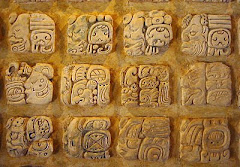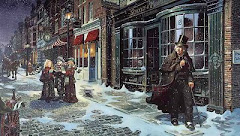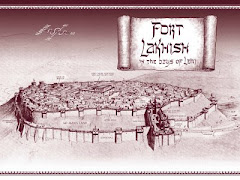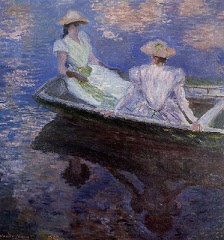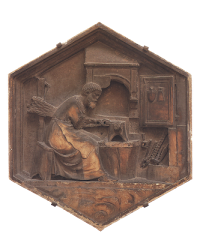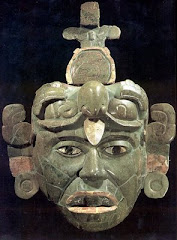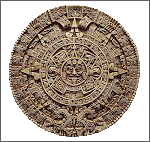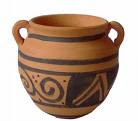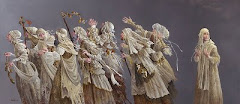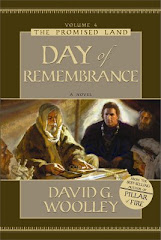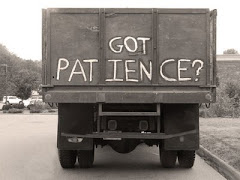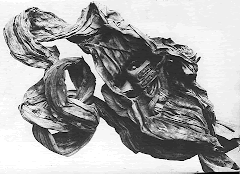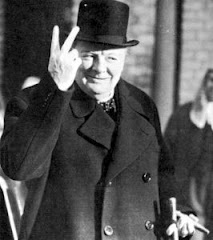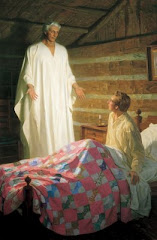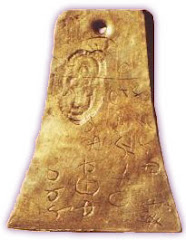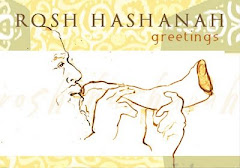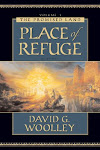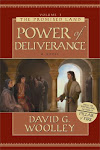Wednesday, July 02, 2014
Free And Independent States
Two hundred thirty-eight years ago, a Pennsylvania journalist penned the first news coverage of what was likely to be the most important event in U.S. history. The entire story, buried beneath almost two pages of classified ads for runaway slaves, was one sentence — no longer than a tweet:
"Philadelphia, July 3: Yesterday the Continental Congress declared the United Colonies free and independent states."
John Adams, in a letter to his wife, Abigail, said the movement would be "the most memorable Epocha in the History of America," according to the National Archives.
"I am apt to believe that it will be celebrated, by succeeding Generations, as the great anniversary Festival," Adams wrote. "It ought to be solemnized with Pomp and Parade, with Shews, Games, Sports, Guns, Bells, Bonfires and Illuminations from one End of this Continent to the other."
The newspaper, however, was able to sum it all up in that one remarkable, yet unmemorable sentence.
Fewer than 1,000 copies of the July 3, 1776, issue of the Pennsylvania Gazette were printed, and only a handful of originals still exist. One copy, now stained and slightly faded behind a glass frame, recently made its way into the hands of Provo resident Brent Ashworth.
Ashworth marvels at the surprisingly underwhelming coverage of the event that would lead to war, independence and the birth of a nation.
"I wonder about the citizens reading this for the first time if they really gathered the importance of that," he said. "Probably not."
"Advertising is still important, but it was front page, back then."
In his 60 years of collecting, Ashworth had heard of the Benjamin Franklin-owned newspaper but never believed he would see a copy of the July 3 issue. That changed last month when it appeared in an auction catalog.
"I was shocked," he said. "It's a very rare paper. … It's a great piece."
Not much is known of the copy that Ashworth now owns, other than it has traveled from collection to collection through generations of owners.
Last month the document sold online for $15,757 on RR Auction, according to the auction house. But Ashworth says monetary price is no indication of any artifact's inherent value.
"It's totally immaterial what it costs," he said. "It's the least important thing. … What something's worth today, it may be worth less tomorrow, it may be worth more tomorrow. What does that have to do with the inherent value of it?"
The newspaper holds a place among other relics in Ashworth's collection. What also stands out is an original facsimile of the Declaration of Independence with the words "W. J. Stone SC. Washn." near the lower-left corner.
About 50 years after the signing of the Declaration, William Stone was commissioned by John Quincy Adams to make commemorative press copies of the Declaration. To do so, Stone used a "wet transfer" method which transferred some of the ink of the original document onto a thin, wet sheet of manuscript paper. That ink was then reimposed and engraved onto a copper plate, according to the National Archives.
Copies, such as the one Ashworth owns, were printed from Stone's copper plate.
"I think the thing in collecting that means the most to me is it brings (history) alive," Ashworth said. "These are real things; they're kind of hard to argue with."
Ashworth's issue of the Pennsylvania Gazette and his copy of the Declaration of Independence will be on display Thursday and Friday at the Crandall Historical Printing Museum, 275 E. Center, in Provo.
Wednesday, May 07, 2014
We Lost Your Mother
I had to go to the orthodontist yesterday and I took my 88 year old Mom along. She goes everywhere I go. Even to the orthodontist. And she patiently waits in the reception area will I get new wires. And rubber bands to pull my lower jaw back six inches or so.
Apparently its not aligned properly. (My jaw, not my Mom)
Its been six months of sore mouth and five hours a day of brushing, flossing and picking out left overs. Have you ever counted how many spinach leaves get stuck between your gum and cheeks? I could write a book.
After this visit I now have rubber bands. The technician said, "You can change them every four hours."
I said, "Every what?"
She said, "You don't have to get up at night, of course. Just while you're awake. They lose their elasticity, you know."
So while I'm getting trained in the finer arts of rubber band changing, the secretary runs into the room and informs us that they've lost my mother. They searched the parking lot. The other dental offices. The bathrooms. The elevator. She was nowhere to be found. Until, of course, they searched in the far corners of the reception area where a jar of red jelly beans sat atop an obscure table with a sign awarding $100 dollars for the best guess.
When I asked her where she'd been all this time she said, "I was counting."
Her guess: 2,056
Friday, November 25, 2011
Compass of God

I promised I would return to blogging once Compass of God was written, submitted to the publisher, edited, and sent off to the printer. All that's done and I'm happy to report that I'm sticking my toes back into blogging waters and testing the temperature. Its been a while. How have you been?
You can check out Compass of God at Deseret Book Online (there's even a review written by the first reader of the novel, Anita Worthen), or you can wait until it appears on bookstore shevles sometime later in October to have a look.
I'm busy writing volume 6, Land of Promise. I hope that doesn't confuse you. The full title: The Promised Land Series, Volume 6: Land of Promise, sounds like I'm stuttering. I'm not. There's a difference between a Promised Land and a Land of Promise, and I'm hoping to make that one of the major themes in Land of Promise which, incidentally, opens in the New World. Shocked? Did you ever think we'd actually get to the Americas in this series? Its a period of ancient history I've been itching to write about for over a decade. Hopefully you've been itching to read about it too. I'm almost "giddy" that years of ancient American research is finally coming out on the pages. Don't worry. I won't bore you with it. It will just operate in the background (and a little foreground) in support of the actors who people this series about the keystone of our faith--the Book of Mormon.
Hope you enjoy volume five. The managing editor at the publishing house, after reading Compass of God for the first time, said, "David, you really should write more romance novels." You'll understand what she meant when you get your hands on a copy. Let me know if you have a chance to read Compass of God. I'd enjoy reading your review. And stop in here at the blog from time to time. I plan on being a regular.
Its good to be back.
Monday, November 07, 2011
Backliner For Compass of God

The author doesn't get to see what's on the back of the jacket cover until the book is released in bookstores. So naturally, I was curious when the first copies began appearing in bookstores last week. I'm not exactly sure who wrote the blurb that appears on the back cover for Compass of God, but I have my suspicions. During the production phase, one of the editors assigned to this project shared with me her favorite passage from the novel--its a snippet of dialogue that also appears on the jacket cover where Ishmael is speaking to his very marriageable daughters. Gotcha Shauna. Here's a sample of her best backliner gushing:
Beautifully written, deeply moving, and highly intense, Compass of God is a novel about a tumultuous and spiritually significant period of history that sweeps the reader along in the events that take a Book of Mormon prophet and his family into uncharted regions of time, place, and the human heart.
The cast of characters is richly diverse and compelling in this story of political intrigue, intricate family dynamics, and spiritual awakenings. Author David Woolley has once again created a masterful blend of intensely researched details, adventure, and drama, and he has an unerring grasp of the complexity of human relationships in this unforgettable story of love, betrayal, faith, and forgiveness.
Filled with page-turning action, this superb fifth volume in the Promised Land series has all the elements that make for outstanding historical fiction. It is a well-orchestrated, breathtaking symphony of adventure, romance, and a fever-pitched battle between the forces of good and evil.
Tuesday, July 13, 2010
In Memory of Irene Sendler
by David G. Woolley
On May 12, 2008 Irene Sendler passed from this earth. She was 98 years old. A polish national living in Warsaw during the German occupation, she arranged with the Reichstag to hire on in sewer maintenance inside the Jewish Ghetto, a housing district the Germans sealed off and converted into a human holding area. What the Germans didn't know, was that Irene was an operative of sorts. An army of one. Commissioned by her heart, and advanced in rank by her conviction that freedom and liberty were the most precious gifts of God.
Neighborhood by neighborhood Jews inside the Ghetto were placed on rail cars and removed to concentration camps in Germany for extermination. As rumor of the Holocaust fed suspicion, mothers and fathers were convinced that the departing trains were not conveying their neighbors and friends to a better life outside the Ghetto. Desperation reached panicked proportion as parents tried to save their children from the hands of murderers.
Enter Irene Sendler. To German soldiers guarding the entrances to the Warsaw Ghetto she was a plumbing and sewer specialist with a large tool box and a three-speed, manual transmission covered black-box truck to transport her equipment. To the residents of the Ghetto she was a savior.
Irene trained her dog to bark uncontrollably at every Ghetto entrance. The soldiers didn't bother with the snarling mutt and let her pass without much more than a cursory visual check through the driver's window. The barking also covered the cries of Jewish infants hidden in the false compartment beneath Irene's tools. Children too large for the tool box were hidden in a burlap sack.
In all, Irene smuggled 2,500 infants and children to safety at half way houses around Warsaw and from there they were spirited out of the country. For her bravery the Germans broke both her legs, both arms, and severely beat her. But she survived her capture and guarded the names of all 2,500 children in a glass jar which she kept buried beneath a tree in her backyard until the war ended and she could help reunite the few Holocaust survivors with their children.
The year before she passed away, Irene was nominated for the Nobel Peace Prize. She was denied. The award was given, instead, to Al Gore for a slide show about global warming--an advocacy endeavor fraught with falsified data for which he has been richly rewarded with millions of dollars from global warming adherents. Here at the Top of the Morning we think Irene has gone on to far greater rewards than any King of Norway has power to confer.
Freedom and liberty. Irene never forgot the price of either and that's what makes her worthy of the true prize of peace.

On May 12, 2008 Irene Sendler passed from this earth. She was 98 years old. A polish national living in Warsaw during the German occupation, she arranged with the Reichstag to hire on in sewer maintenance inside the Jewish Ghetto, a housing district the Germans sealed off and converted into a human holding area. What the Germans didn't know, was that Irene was an operative of sorts. An army of one. Commissioned by her heart, and advanced in rank by her conviction that freedom and liberty were the most precious gifts of God.
Neighborhood by neighborhood Jews inside the Ghetto were placed on rail cars and removed to concentration camps in Germany for extermination. As rumor of the Holocaust fed suspicion, mothers and fathers were convinced that the departing trains were not conveying their neighbors and friends to a better life outside the Ghetto. Desperation reached panicked proportion as parents tried to save their children from the hands of murderers.
Enter Irene Sendler. To German soldiers guarding the entrances to the Warsaw Ghetto she was a plumbing and sewer specialist with a large tool box and a three-speed, manual transmission covered black-box truck to transport her equipment. To the residents of the Ghetto she was a savior.
Irene trained her dog to bark uncontrollably at every Ghetto entrance. The soldiers didn't bother with the snarling mutt and let her pass without much more than a cursory visual check through the driver's window. The barking also covered the cries of Jewish infants hidden in the false compartment beneath Irene's tools. Children too large for the tool box were hidden in a burlap sack.
In all, Irene smuggled 2,500 infants and children to safety at half way houses around Warsaw and from there they were spirited out of the country. For her bravery the Germans broke both her legs, both arms, and severely beat her. But she survived her capture and guarded the names of all 2,500 children in a glass jar which she kept buried beneath a tree in her backyard until the war ended and she could help reunite the few Holocaust survivors with their children.
The year before she passed away, Irene was nominated for the Nobel Peace Prize. She was denied. The award was given, instead, to Al Gore for a slide show about global warming--an advocacy endeavor fraught with falsified data for which he has been richly rewarded with millions of dollars from global warming adherents. Here at the Top of the Morning we think Irene has gone on to far greater rewards than any King of Norway has power to confer.
Freedom and liberty. Irene never forgot the price of either and that's what makes her worthy of the true prize of peace.
Friday, July 02, 2010
The Dictates of Your Own Conscience
by David G. Woolley

In this Norman Rockwell classic painting titled Religious Freedom, we're reminded that the revolutionary period of American history was fueled by the desire to be free to express religious belief, free to espouse a doctrine of faith, and free from any government intrusion in our religious participation.
The religious freedoms our founders guaranteed in the constitution are desperately under siege from US citizen groups, but now elements within our government are beginning to narrowly define freedom of religion as only the freedom to assemble in a house of worship. Its okay if you want to get together at church, but don't go thinking you have the freedom to espouse doctrines that dissent from the Government's position on moral issues. If freedom of religion is nothing more than the freedom to assemble, why did the founders write both liberties into the Constitution?
Hillary Clinton, the US secretary of state, speaking at Georgetown University last December, made the chilling point very clear. You can assemble for worship, but you're not free to publicly espouse religious beliefs that are counter to the governments stand in favor of the pro-gay rights movement, the pro-abortion movement or the pro-social justice and socialism movements. That's from the state department which is only a hop, skip and a jump away from the justice department. And then what do people of faith do? In this Manhattan Declaration video, Dr. Colson explains the difference between the freedom of assembly and the freedom of religion which is, in a nut shell, the freedom to espouse specific religious doctrinal beliefs without any government intrusion or coercion.
Of all the freedoms we celebrate on this fourth of July holiday, freedom of Religion is the foundation upon which all other God-given rights are based. Freedom of religion was the roiling under current that carried the American revolution into being, it was the reason for the founding of America. We should not only be grateful for our religious freedoms guaranteed in the constitution, we should be as willing as were our founders, to be watchful and to stand as guardians in defense of the dictates of our own conscience. Our religious beliefs are our most sacred trust and the highest of all the unalienable rights granted by our Creator.
Happy fourth of July!

In this Norman Rockwell classic painting titled Religious Freedom, we're reminded that the revolutionary period of American history was fueled by the desire to be free to express religious belief, free to espouse a doctrine of faith, and free from any government intrusion in our religious participation.
The religious freedoms our founders guaranteed in the constitution are desperately under siege from US citizen groups, but now elements within our government are beginning to narrowly define freedom of religion as only the freedom to assemble in a house of worship. Its okay if you want to get together at church, but don't go thinking you have the freedom to espouse doctrines that dissent from the Government's position on moral issues. If freedom of religion is nothing more than the freedom to assemble, why did the founders write both liberties into the Constitution?
Hillary Clinton, the US secretary of state, speaking at Georgetown University last December, made the chilling point very clear. You can assemble for worship, but you're not free to publicly espouse religious beliefs that are counter to the governments stand in favor of the pro-gay rights movement, the pro-abortion movement or the pro-social justice and socialism movements. That's from the state department which is only a hop, skip and a jump away from the justice department. And then what do people of faith do? In this Manhattan Declaration video, Dr. Colson explains the difference between the freedom of assembly and the freedom of religion which is, in a nut shell, the freedom to espouse specific religious doctrinal beliefs without any government intrusion or coercion.
Of all the freedoms we celebrate on this fourth of July holiday, freedom of Religion is the foundation upon which all other God-given rights are based. Freedom of religion was the roiling under current that carried the American revolution into being, it was the reason for the founding of America. We should not only be grateful for our religious freedoms guaranteed in the constitution, we should be as willing as were our founders, to be watchful and to stand as guardians in defense of the dictates of our own conscience. Our religious beliefs are our most sacred trust and the highest of all the unalienable rights granted by our Creator.
Happy fourth of July!
Thursday, June 24, 2010
World Cup Soccer "Vuvuzela (trumpet)" Update

With all the controversy over the horn-blowing vuvuzela soccer fans at
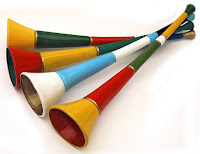 South Africa's World Cup, this photo explains a lot. If you've watched any matches you may have noted that players and coaches are complaining they can't hear on the field. Sound technicians at television stations around the world have worked feverishly to find a way to filter out the horn-blowing that is even more obnoxious live than it is via satellite or cable. But really, do a few network computer geeks think they can filter out this trumpeter? I wouldn't want to be the one to keep his trumpet-playing from being heard.
South Africa's World Cup, this photo explains a lot. If you've watched any matches you may have noted that players and coaches are complaining they can't hear on the field. Sound technicians at television stations around the world have worked feverishly to find a way to filter out the horn-blowing that is even more obnoxious live than it is via satellite or cable. But really, do a few network computer geeks think they can filter out this trumpeter? I wouldn't want to be the one to keep his trumpet-playing from being heard. In a crucial decision handed down by FIFA last week, the vuvuzela will not be banned from any World Cup stadiums. Trumpeting isn't only an African cultural artifact, its big business in thousands of kiosks surrounding each venue. And for our trumpeteer, its more than commerce. Its a mission. The vuvuzela is to South Africa's 2010 World Cup as hot dogs and apple pie were to the USA's 1994 World Cup.
 The Africans are buying the plastic horns in droves and, apparently, word has gotten out beyond the confines of Johannesburg. One of the most heralded horn-blowers of all time was photographed recently in the stands, lending his heavenly talents to the ruckus in South Africa this month. Doesn't he have family playing for Mexico, Honduras, Uruguay, Chile, Paraguay, Brazil, Argentina, Japan, or maybe even the USA?
The Africans are buying the plastic horns in droves and, apparently, word has gotten out beyond the confines of Johannesburg. One of the most heralded horn-blowers of all time was photographed recently in the stands, lending his heavenly talents to the ruckus in South Africa this month. Doesn't he have family playing for Mexico, Honduras, Uruguay, Chile, Paraguay, Brazil, Argentina, Japan, or maybe even the USA? Go USA!
Go Moroni!
Bring home the cup to the New World!
__________________________
Join author David G. Woolley at his Promised Land Website.
Subscribe to:
Posts (Atom)



